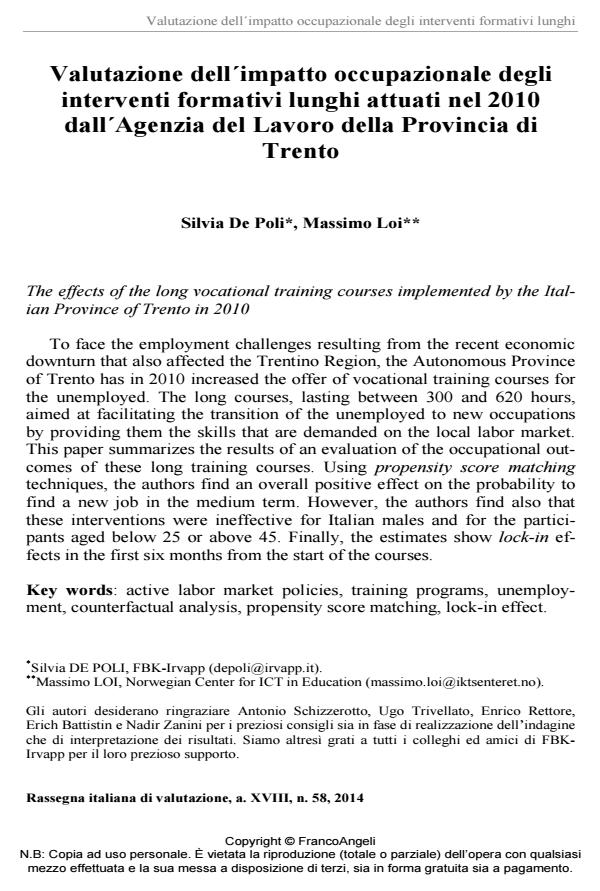Valutazione dell´impatto occupazionale degli interventi formativi lunghi attuati nel 2010 dall´Agenzia del Lavoro della Provincia di Trento
Titolo Rivista RIV Rassegna Italiana di Valutazione
Autori/Curatori Silvia De Poli, Massimo Loi
Anno di pubblicazione 2015 Fascicolo 2014/58
Lingua Italiano Numero pagine 30 P. 102-131 Dimensione file 348 KB
DOI 10.3280/RIV2014-058006
Il DOI è il codice a barre della proprietà intellettuale: per saperne di più
clicca qui
Qui sotto puoi vedere in anteprima la prima pagina di questo articolo.
Se questo articolo ti interessa, lo puoi acquistare (e scaricare in formato pdf) seguendo le facili indicazioni per acquistare il download credit. Acquista Download Credits per scaricare questo Articolo in formato PDF

FrancoAngeli è membro della Publishers International Linking Association, Inc (PILA)associazione indipendente e non profit per facilitare (attraverso i servizi tecnologici implementati da CrossRef.org) l’accesso degli studiosi ai contenuti digitali nelle pubblicazioni professionali e scientifiche
To face the employment challenges resulting from the recent economic downturn that also affected the Trentino Region, the Autonomous Province of Trento has in 2010 increased the offer of vocational training courses for the unemployed. The long courses, lasting between 300 and 620 hours, aimed at facilitating the transition of the unemployed to new occupations by providing them the skills that are demanded on the local labor market. This paper summarizes the results of an evaluation of the occupational outcomes of these long training courses. Using propensity score matching techniques, the authors find an overall positive effect on the probability to find a new job in the medium term. However, the authors find also that these interventions were ineffective for Italian males and for the participants aged below 25 or above 45. Finally, the estimates show lock-in effects in the first six months from the start of the courses.
Parole chiave:Active labor market policies, training programs, unemployment, counterfactual analysis, propensity score matching, lock-in effect
Silvia De Poli, Massimo Loi, Valutazione dell´impatto occupazionale degli interventi formativi lunghi attuati nel 2010 dall´Agenzia del Lavoro della Provincia di Trento in "RIV Rassegna Italiana di Valutazione" 58/2014, pp 102-131, DOI: 10.3280/RIV2014-058006